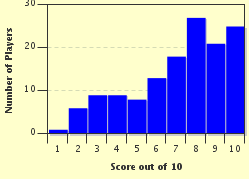Quiz Answer Key and Fun Facts
1. In 1915, Australia and New Zealand were young countries. When the ANZACs landed at Gallipoli, they fought valiantly in a desperate but futile battle. However they fought honorably, and the traits they demonstrated fighting a common enemy became known as the ANZAC legend and defined the identity of Australia as a country. Which one of the following is NOT a defining characteristic of the ANZAC legend?
2. The Second Boer War (1899-1902) took place in South Africa between Britain and the Boers. At the beginning of the war, troops from Australia fought on the British side, but not under an Australian flag. Why not?
3. In 1915 as part of WWI, the ANZACs landed on Gallipoli, a narrow peninsula in the Ottoman Empire, with orders to secure the area and the adjoining Dardanelles, a narrow strait separating Europe from Asia Minor. What was the importance of securing this area?
4. In Perth in August 1914, John Simpson (real name John Simpson Kirkpatrick) signed up and was made a field ambulance stretcher bearer because of his physical strength. What very unusual method did Simpson use in retrieving injured soldiers from the front line?
5. During World War II, Erwin Rommel's apparently invincible Afrika-Korps were eventually stopped by a contingent of around 14,000 Australian soldiers with support from British artillery and Indian troops. During the long siege of this Libyan location, the German propaganda coined an apparently derogatory term for these gallant stalwarts. What did Lord Haw Haw call them which soon evolved into a badge of great honour and distinction?
6. Following the merger of Malaya, Singapore and small states such as Sabah and Sarawak in the north of Borneo to form Malaysia, a neighbouring country set about attempting to destabilise this federation. These attempts led to an undeclared and largely unreported war lasting three years from 1963 to 1966 to which Australia sent two battalions of troops in support of Malaysia.
Which country was involved in this confrontation, called "Konfrontasi" by the would be invaders?
7. Anzac biscuits are an iconic part of our cuisine. They were sent to the ANZACs in Europe. What key ingredient normally found in biscuits (cookies), is lacking in Anzac biscuits?
8. One of the reasons Anzac Day became "popular" again in the 1980s was due to the release of "Gallipoli" (1981), an Australian movie portraying the landing on Gallipoli in 1915. The plot follows two young Australians, Archy Hamilton (Mark Lee) and Frank Dunne as they lose their innocence as they become entrenched in the war. Which soon to be well-known actor played Frank Dunne?
9. While this quiz is mainly about the Australian aspects of Anzac Day, Anzac Day is very much a part of the New Zealand identity as well. What major difference marks the way New Zealand commemorates Anzac Day compared with Australia?
10. Anzac Day commemorates the landing of the ANZACs at Gallipoli in 1915. What is the date of the landing?
Source: Author
1nn1
This quiz was reviewed by FunTrivia editor
bloomsby before going online.
Any errors found in FunTrivia content are routinely corrected through our feedback system.

